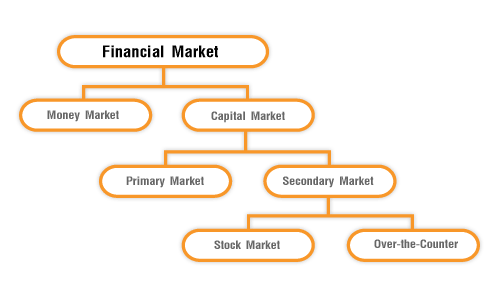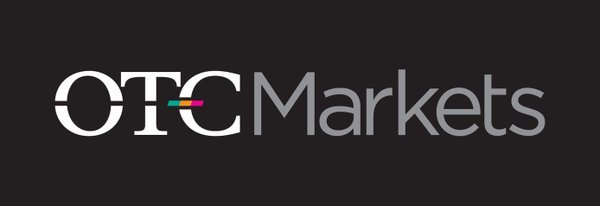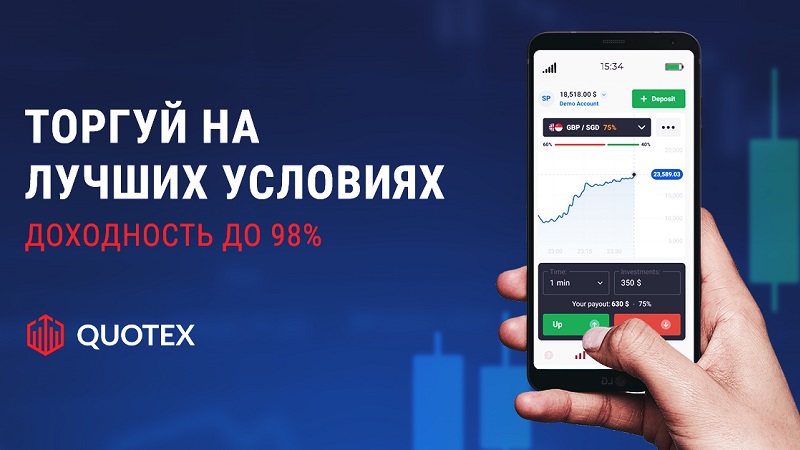Introduction – Types of financial markets and their roles
[frame align=”center”] [/frame]
[/frame]
A financial market is a broad term that describes any market where buyers and sellers participate in the trading of assets such as stocks, bonds, currencies and other financial instruments. Financial markets are generally defined by the availability of transparent pricing, basic rules regarding trading, costs and fees, and the forces of market trading that determine the prices of securities.
Financial markets in the world exist in almost every country. Some of them are very small and have only a few participants, while others – such as the New York Stock Exchange (NYSE) and the foreign exchange markets – trade trillions of dollars daily.
Investors have access to a large number of financial markets and exchanges representing a wide range of financial products. Some of these markets have always been open to private investors; others remained the exclusive preserve of large international banks and financial professionals until the very end of the twentieth century.
Capital Markets
A capital market is one in which individuals and institutions trade financial securities. Organizations and institutions in the public and private sectors also often sell securities in the capital markets in order to raise funds. Thus, this type of market consists of both a primary and a secondary market.
Any government or corporation requires capital (funds) to finance its activities and participate in its own long-term investments. To do this, the company raises money through the sale of securities – shares and bonds of its company. They buy and sell them in the capital markets.
Stock markets
Stock markets allow investors to buy and sell shares of publicly traded companies. They are one of the most important areas of the market economy, as they provide companies with access to capital and investors with a portion of ownership in the company and profit potential based on the company’s future performance.
This market can be divided into two main parts: the primary market and the secondary market. In the primary market, new issues of shares are offered for the first time, any subsequent trading of shares takes place in the secondary market.
Bond markets
A bond is an investment debt in which an investor lends money to a legal entity (corporate or government). A legal entity borrows funds over a certain period of time at a fixed interest rate. Bonds are used by companies, municipalities of states and the United States, as well as foreign governments to finance various projects and activities. Bonds can be bought and sold to investors in credit markets around the world. Alternatively, this market is referred to as a debt, credit, or fixed-income market.
In nominal terms, this is much more than the world’s stock markets. The main categories of bonds are corporate bonds, municipal bonds and U.S. Treasury bonds, notes and notes, which are collectively referred to simply as “Treasuries.”
[frame align=”center”]
 [/frame]
[/frame]
Money market
The money market is a segment of the financial market in which financial instruments with high liquidity and very short maturities are traded. The money market is used by participants as a means of borrowing and lending in the short term: from a few days to a little less than a year. Money market securities consist of negotiable certificates of deposit (CDs), bank acceptances, U.S. Treasury bills , commercial paper, municipal notes, Eurodollars, federal funds, and buybacks (REPOs). The money market investment is called cash investment because of its short maturity dates.
The money market uses a wide range of participants. From a company that raises money by selling commercial securities on the market, CDs are bought to the investor as a safe place to store money in the short term. The money market is generally seen as a safe place to store money due to the highly liquid nature of securities and with a short maturity. Because it is very conservative, the money market offers significantly lower returns than most other securities. Nevertheless, there are risks in the money market, including such as the risk of default on securities, commercial securities, so any investor should be aware of this. (To learn more, read our money market tutorial.)
Cash or spot market
Investing in the cash or “spot” market is highly risky, with the potential for both large losses and large profits. In the cash market, goods are sold for cash and delivered immediately. In addition, contracts for buying and selling on the spot market come into force immediately. Prices are calculated in cash “on the spot” at current market prices. This significantly distinguishes them from other markets in which trading is carried out at forward prices.
The money market is complex and delicate, and is generally not suitable for inexperienced traders. Money markets are dominated by so-called institutional market players, such as hedge funds, limited partnerships, and corporate investors. The very nature of tradable products requires detailed, high-level macroeconomic analysis, trading skills, and access to information.
Derivative securities market
A derivative is so named for the following reason: its value is derived from its underlying asset or assets. A derivative is a contract, but in this case, the contract price is determined by the market price of the underlying asset. It sounds complicated because it is . The derivatives market adds another layer of complexity, and is therefore not suitable for inexperienced traders who want to speculate. However, it can be used very effectively as part of a risk management program.
Examples of common derivatives are forwards, futures, options, swaps, and contracts for difference (CFDs). Not only are these tools themselves complex, but so are the strategies used by participants in this market. There are also many derivatives of available structured products and secured liabilities, mostly in the more over-the-counter (non-exchange) market, which are used to varying degrees by professional investors, institutions and hedge fund managers, but which play a minor role in private investing.
Forex & Interbank Market
The interbank market is a financial system for trading currencies between banks and financial institutions, with the exception of retail investors and small trading parties. While some interbank trades are conducted by banks on behalf of large clients, most interbank trades take place from banks’ own accounts.
The foreign exchange market trades currencies. The Forex market is the largest, most liquid market in the world, includes all currencies in the world. The average traded value exceeds $1.9 trillion per day. Forex is the world’s largest market in terms of the circulating total value of money, and any person, firm or country can participate in this market.
There is no central platform for currency exchange; Trading is carried out through the counter. The forex market operates 24 hours a day, five days a week, and currencies are traded around the world between the major financial centers of London, New York, Tokyo, Zurich, Frankfurt, Hong Kong, Singapore, Paris, and Sydney.
Until recently, Forex was not the prerogative of large financial institutions, corporations, central banks, hedge funds and very rich people in the foreign exchange market. The advent of the internet has changed all of this and made it possible for average investors to buy and sell currencies with a light click through online brokerage accounts. (For further reading, see Foreign Exchange Interbank Market.)
Primary Markets vs. Secondary Markets
The primary market issues new securities on the stock exchange. Companies, governments, and other groups receive financing through borrowed funds or equity securities. Major markets, also known as “new issue markets,” are facilitated by underwriting teams made up of investment banks, which set an initial price range for a given security and then oversee its sale directly to investors.
The main markets are those where investors have their first chance to take part in a new issue of securities. The issuing company or group receives cash from the sale, which is then used to fund operations or expand the business.
Secondary market. On it, investors purchase securities or assets from other investors without selling the companies themselves. The U.S. Securities and Exchange Commission (SEC) registers securities prior to their initial issuance, then they begin trading on the secondary market on the New York Stock Exchange, NASDAQ, or other place where the securities have been accepted for listing and trading.
In the secondary market, the bulk of exchange trading occurs every day. Major markets may see increased volatility in secondary markets because it is difficult to accurately assess investor demand for a new security over the past few days of trading. In the primary market, prices are often set in advance, while in the secondary market, only forces such as supply and demand determine the price of a security.
Secondary markets also exist for other securities, such as when funds, investment banks or organizations that issue loans for the purchase of Fannie Mae mortgages. In any secondary trading market, cash returns go to the investor, not directly to the underlying company/organization. (To learn more about primary and secondary markets, read Look at Primary and Secondary Markets.)
OTC market
[frame align=”center”]
 [/frame]
[/frame]
The over-the-counter (OTC) market is a type of secondary market, which is also called a market dealer. The term “over the counter” refers to stocks that are not traded on the stock exchange. These are the Nasdaq, NYSE or the American Stock Exchange (AMEX). Typically, this means that the company’s shares are traded on either an over-the-counter bulletin board (OTCBB) or pink sheets. None of them are exchanges; In fact, they describe themselves as providers of information about the prices of securities. OTCBB and the company’s pink sheet are constrained by far fewer regulations than those that trade stocks on the stock exchange. Most securities that trade in this way have pennies or from very small companies in stock.
Third and fourth markets
You can also hear the terms “third” and “fourth” markets. They do not apply to individual investors, as they include significant volumes of shares, which are traded for each transaction. These markets deal with transactions between broker-dealers and large institutions through a greater difference than in electronic networks. The third market includes over-the-counter transactions between broker-dealers and large institutions. The fourth market consists of transactions that are made between large institutions. The main reason for the origin of these third and fourth market transactions is to avoid placing these orders through the main exchange, which can significantly affect the price of the security. Since access to the third and fourth markets is limited, their activities have little impact on the average investor.
- Financial institutions and financial markets are designed to help firms make money. They can do this by taking out a loan from a bank and repaying it at a profit, issuing bonds to borrow money from investors to be repaid at a fixed interest rate, or offering investors a partial stake in the company and the ability to claim the residual value in cash in the form of a stock flow.
Sitven Burns recently developed this beautiful graph summarizing the cognitive abnormalities that interfere with informed decision-making. The most active traders and investors in their careers have made most of these mistakes at some point, as the combination of risk and uncertainty under rapidly changing market conditions forces us to accept problematic short-processed abbreviated information.
Years of working with professional money managers and traders have taught me that there will be more success if bias is avoided. A variety of cognitive strengths combine to warm up superlatives of decision-making in markets. I keep saying that successful market participants a) have unique information processing advantages and b) find ways to leverage those strengths in the financial markets.
Understanding Your Cognitive Style
We are used to thinking of personality types – introverted, extroverted, pleasant, unpleasant, conscientious, calm – but we rarely reflect styles after processing our information. A short-term trader who observes setup patterns in real-time and lashes out at those who attract markets for quick profits is very different from an investor who conducts extensive and in-depth analysis, generating information over a period of months to several years. From Kahneman’s point of view, the former relies on fast thinking – a rapid synthesis of the data market – and the latter engages in slow, deep thinking.
We also see other aspects of cognitive style. Some successful market participants very intuitively use their great ability to analyze information, feel the mood, positioning and shifts in trends and intermarket correlations in their guts. Other analytical and data-driven ones often break down trading decisions into rules and even systems of algorithms. So-called hybrid traders use analysis to gain discretionary sense to understand market movements, allowing data to develop intuition.
Looking at any marketplace also reveals one of the key aspects of cognitive style. Some traders actively participate in conversations with colleagues, processing interpersonal and interactive events. Others wear headphones, ignoring the chatter and concentrating on their own thought process. This is the difference in their thinking, this is a signal of whether the trader feels comfortable in a noisy environment, or whether he is an individual player.
Finally, just like medical generalists, specialists and sub-specialists – all categories, from family doctors to experienced surgeons. We also see money managers who trade many asset classes in different regions of the world, and those who are specialists in certain products. Some emphasize the breadth of information and interconnections; others are the depth of information and the degree of detail of the information.
It is at the intersection of different dimensions of cognitive style that successful investors and traders can get a sense of the market. In fact, there can be no effective solution if we are in the air when processing the trading process. A systematic, individual, analytical way of thinking, the trader is individual, he is in a different relationship than just a team, he is in a macroeconomic attitude. A day trader trading stock index futures samples is playing a game that is different from the long-term/short-term manager of a stock portfolio.
Tagged with: Binary Option One Touch • Binary Options Academy • Learning how to trade binary


